If you have a fabric stash (who doesn’t?), you may struggle to really know all of the fabrics you own. I am continually going through mine to see what I have because I don’t always remember what I’ve bought or if I used it or not. So I’m using a low-tech, quick and easy way to catalog my fabrics to track what I have and make the best use of it creating beautiful projects. This method is also portable so I can take it with me when shopping for MORE fabric.
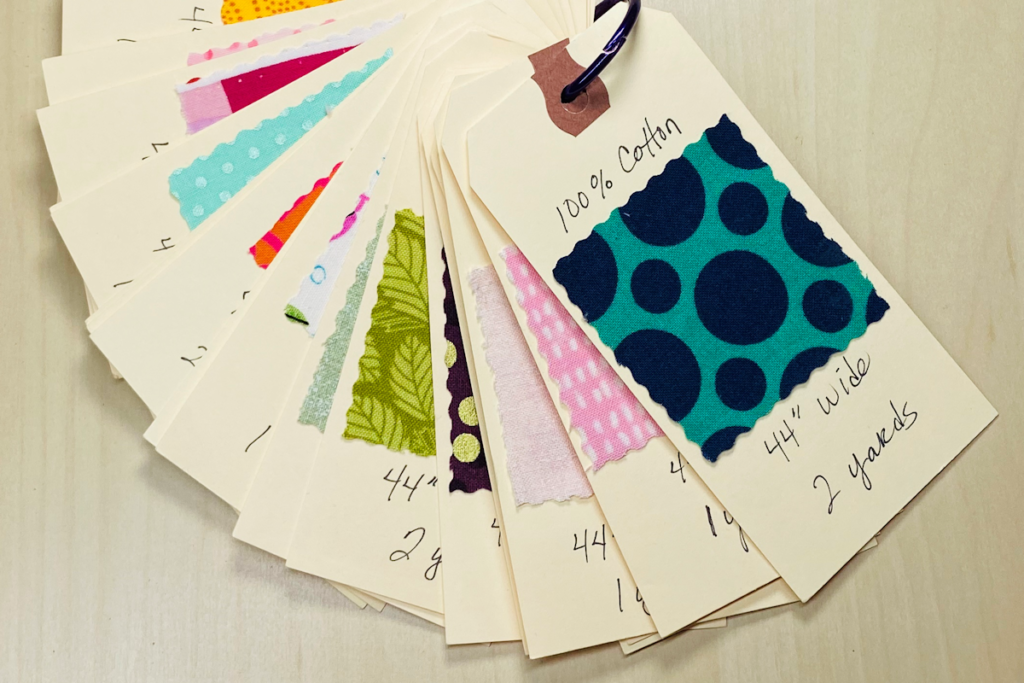 Supplies
Supplies
Start with a few shipping tags that you can find at any office supply store. The ones I use are a common size, 2⅜” x 4¾”. I have one fabric per tag but if you want to use the front and back, you’ll have 2 per tag. Keep reading and I’ll tell what I do with the back of my tags.
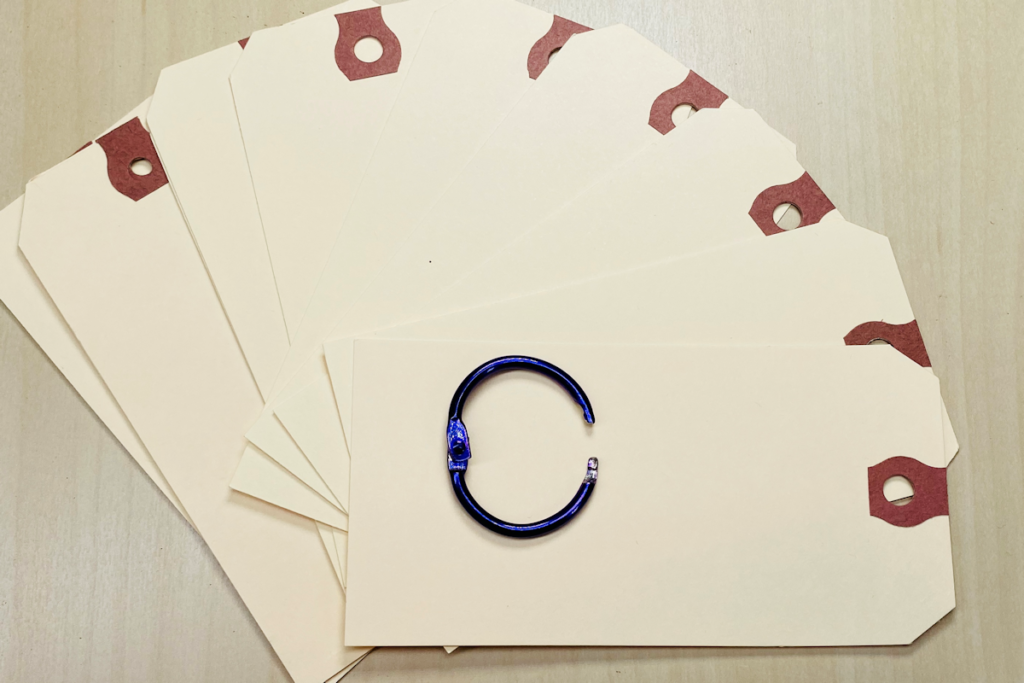
The Front of the Tag
Simply cut a small square of the fabric and attach it to the card. I cut mine about 2” square to leave room on the tag so I can add some written information about the fabric. To attach the swatch to the tag, use a simple glue stick. Using a permanent marker, note any information you want to remember about the fabric such as fiber content, fabric width, and how much you own. You may also want to include where your purchased it and indicate if the fabric is needle-ready (pre-washed).
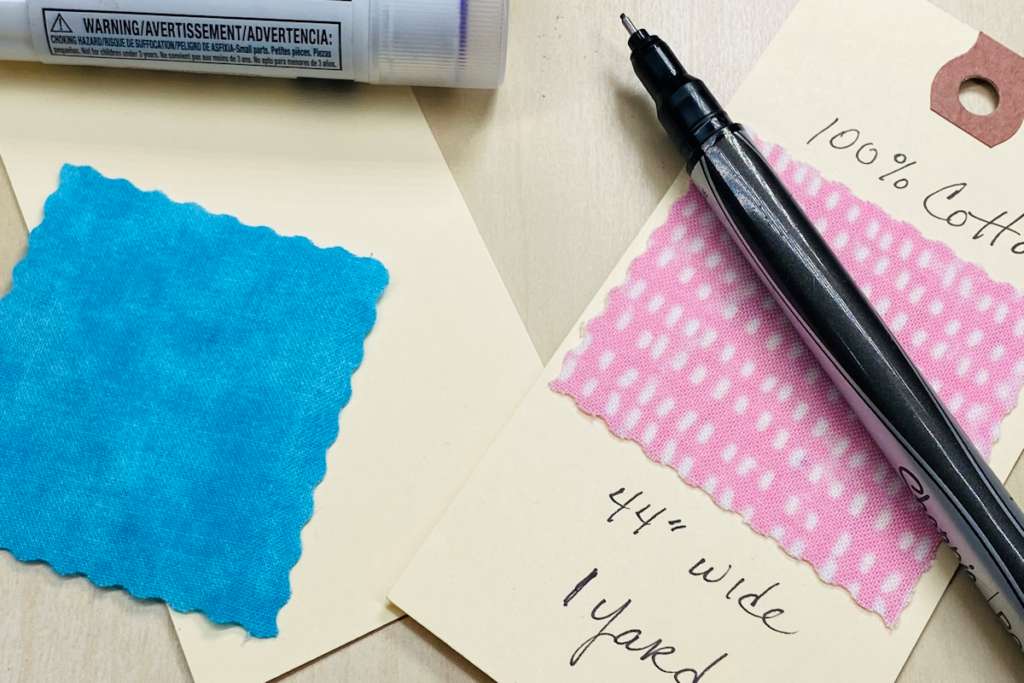
The Back of the Tag
On the back of my tags I add ideas about what I plan to make or could make with the fabric. I also sometimes list any coordinating fabrics that are in my stash. If the selvage of the fabric has information that you find useful, trim it off the fabric and attach it to the back of the tag. Knowing the name of the fabric and the manufacturer may be useful in the future. Many fabrics are printed one time and not reprinted when the manufacturer sells through the original inventory. In the past, it was difficult, if not impossible, to find more to purchase if you decided you needed more at a later date. However, because of the Internet, there is hope. If you have the fabric name, the colorway, and the manufacturer, it may be possible to track down a few additional yards through the power of the world wide web.
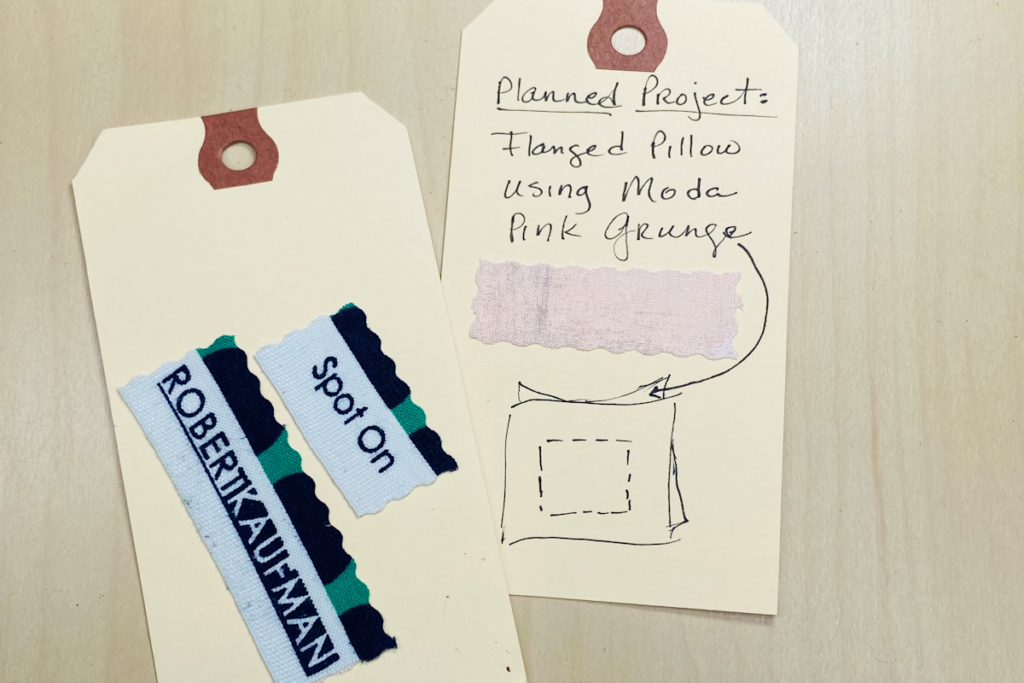
Finishing
Keep the completed tags together with a binder ring that opens so you add and subtract tags as needed. It also makes it easy to create multiple sets of tags, each one dedicated to a particular type of fabric, like quilting cotton, home dec fabric and garment fabrics such as linen, silk and wool.
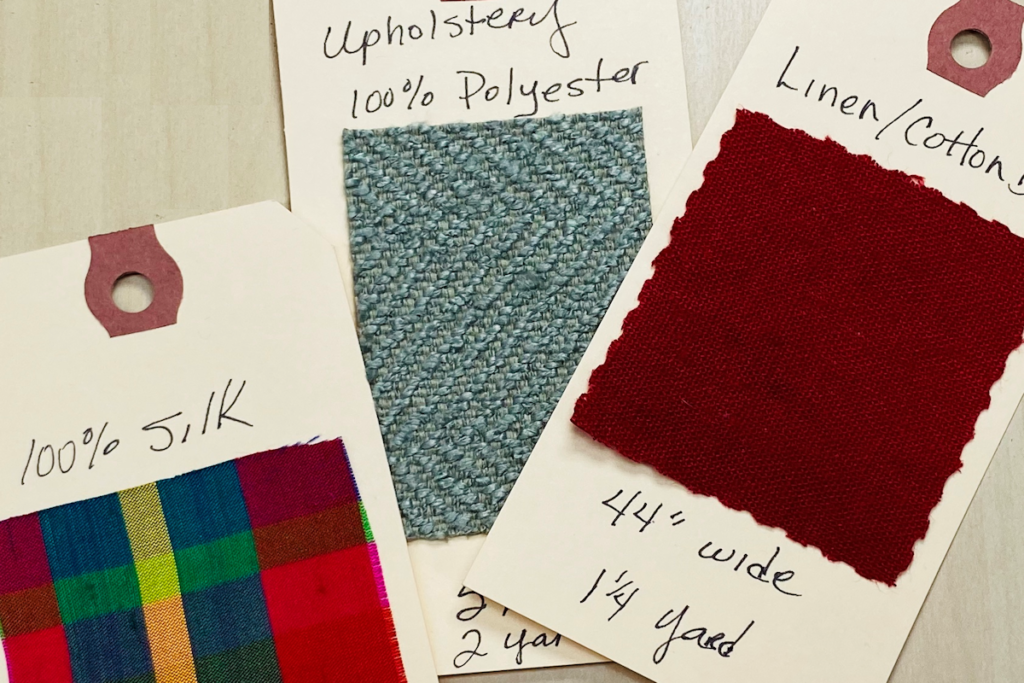
Creating this tag file is simple to do and making one tag takes only a couple of minutes. But if you have a large fabric stash, you’ll want to pace yourself and make a plan. Break it up into small amounts and make the tags in several sessions. I did mine assembly-line style by cutting a pile of swatches and then gluing them all to the tags. Finally, I wrote the information I needed on the tags. I now have a better idea of exactly what fabrics I have and how much I have. If you’ve been overwhelmed by your stash or struggling to know what you have, try this method of organization – it works for me and it may help you, too!


Thank you for this article. I’m a fabric hoarder and wannabe quilt maker. I’ve already measured and sorted some fabrics by color. Additional info is washed/ not, original thought on why i bought the fabric. I have many lovely fabrics that I’m afraid to cut. At least identifying them is a start. Thanks again.
Hi Shirley –
Your welcome! I would love to see any art that you create to hang on your wall. It is really simple to do and then you get to admire your fabric every day!
Susan